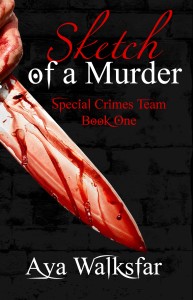I write about, blog about, tweet about and facebook about strong women, women who make a difference in the world. Just as women impact the world, the world—especially the world of words—impacts women.
One part of that world of words is novels. Thousands of #women read, daily. After a difficult day at work, they go home, grab a cup of coffee, toe off the mandatory high heels and kick back with a good book. Unfortunately, many novels depict women as weak, unsuccessful without a man, unhappy when not involved in a relationship, indecisive and in need of rescuing.
Print on demand and ebooks have blown open the publishing industry. There has been a great influx of #indie #authors. Will these authors simply repeat the same formulas that undermine women’s self-image or will they redefine female characters?
This week, I asked my guest, John Dizon, indie author of several books, how he portrays the role of women in his novels.
Aya: John, I noticed in your books that the women play a definite secondary role to the men. Many male authors seem to have strong male leads in their novels, with very few strong female characters. How do you choose the gender of your lead characters?
John: It all depends on whether a major female protagonist can support the novel. I take pride in the fact that most of my novels feature strong female protagonists, and that more than a couple are recognized as women’s fiction. Obviously I won’t create an unrealistic world in which women are stronger than men, especially in action/adventure. I came close in “The Brand”, in which the pirate queen Belen and the Mohawk princess Nightshade were feared by most of the males they interacted with. Sabrina Brooks of “Nightcrawler” has everyone thinking her masked alter ego is a male. These are exceptional woman, however, and I don’t write novels about Amazon worlds. I deal with reality and make a strong female as realistic as logic dictates.
Aya: On the subject of strong female characters, I noticed in Vampir that Celeste is portrayed as an attorney with some strong moral codes about helping her client, yet in the end she divulges all of his information. Throughout the book, Celeste gets herself into some bad situations, and she is rescued by others, usually her boyfriend, Shea. Why did you choose to have her rescued rather than having her rescue others? And why did she go against her original code of ethics?
John: We’re dealing with a number of different narratives in “Vampir”. From Page One, Radojka commits suicide and leaves Celeste holding the bag as she’s accused of smuggling the weapon into his cell and possibly even doing the deed. At the least she may end up being disbarred. Plus the fact that Count Radojka is being revealed as a serial killer and mass murderer after she had taken him on as an elderly client needing his estate issues resolved. She’s treading deep water, being held in psych care at the MCC, and is hoping her boyfriend can save her. I could have had Shea as the lawyer and Celeste as the cop, but a lot of it wouldn’t have worked, especially in the partnership with Bob Methot as an NYC detective. Ninety percent of the women I personally know (and I know some tough women) would have never condoned such abuses of authority and police brutality.
Aya: In the end Celeste is judged mentally unstable and hospitalized. Was there a reason for that as versus having one of the male characters seen as mentally unstable? Could there have been a different way of handling that line of story logic that would show her as a stronger, rather than a weaker, character?
John: Again, if we reversed the roles we would’ve had Celeste going way over the top in condoning Methot being Dirty Harry on steroids. Another thing is to consider the genre. Whether we like it or not, there’s a lot of sexual tension in the vampire genre, which would have been released had it been about Shea as a ‘gentleman in distress’. As far as the hospitalization, it can be seen that Celeste’s personality begins changing drastically throughout her incarceration, and in the last line we find out that she has actually been possessed by one of Radojka’s demons. That was my prompt for “Vampir II” if I can overcome my critics! (big grin)
Aya: How do you define a strong female character? What attributes would she show in a novel?
John: She’s got to be very attractive and physically gifted (which is all about self-confidence and capability), above average intelligence, eager to compete in a man’s world and have a kind heart. Princess Jennifer of “Tiara” is probably my most feminine heroine, but even though she’s kidnapped and nearly killed, her spirit never breaks. Bree “Nightcrawler” Brooks is very feminine, but when she pulls on that balaclava she’s the toughest of all. At the other end of the spectrum, Debbie Munson of “Hezbollah” and Bridgette Celine of “The Fury” are hell on wheels. They would give Belen and Nightshade the fight of their lives.
Aya: Which of your female characters do you believe display the traits of a strong female? And why? Which traits make her as strong?
John: I’ve got to go with Bree Brooks. She is America’s oldest virgin (at 24) despite the fact she was a party girl and a police academy trainee before she took over Brooks Chemical Company after her father’s death. She’s ridiculously old-fashioned but, paradoxically, is street-wise and has the charm and people-smarts to excel in a man’s world. What makes her a role model is her indomitable will and her desire to help others. She can sit on a pedestal and have the world at her feet, but she continually risks her life to save the planet, one person at a time.
Aya: Do you believe that words matter? If so, what impact do you feel the portrayal of women in novels as being physically in need of protection, mentally unstable even when they are telling the truth, has on the self-esteem, on a subconscious level, of women who read those novels?
John: This is where authors encourage readers to discuss works of redeeming social value, and raises the bar for us to write such works. This interview, in itself, has been a litmus test and a wonderful opportunity to discuss my work from a female perspective. I would hope that women engage in discussion of my female protagonists and determine whether they are realistic, and whether novels such as “Nightcrawler” and “Hezbollah” qualify as women’s fiction. Most importantly, I would want the work to be recognized as portraying women as overcoming obstacles in male-dominated environments. I would be walking on air if I got an e-mail from a female reader telling me she resolved an issue by asking herself “What would Bree Brooks do?” or “What would Debbie Munson do?” Belen or Nightshade — not so much.
One novel that deserves particular mention is “King of the Hoboes”. Veronika Heydrich goes undercover and is forced to live on the streets to infiltrate the Hobo Underground. Her boyfriend, Evan, desperately tries to keep track of her, but is nearly killed in the process. The dynamic in this novel is showing the continuing ordeal that homeless women in New York City deal with on a daily basis. There are enormous discrepancies and gender discrimination within the homeless community as well as the City’s attitude and levels of accommodation. People have no idea how dangerous it is for homeless women and children in NYC, and Roni’s experience helps people understand that situation. They are in great need of special attention and this must be addressed and resolved in the very near future.
Aya: How can we as novelists help increase female self-esteem?
John: I don’t think you ever want to portray any of your protagonists in a weak light unless you’re trying to make a point. Rummaging through my anthology, the only ‘weak’ female protagonist is Jana Dragana in “Wolf Man”, and she’s portrayed as such because she’s been victimized as a beautiful woman who finds work as a model and ends up in a downward spiral through drug addiction. Yet she grows stronger as the story unfolds, and at the end it is Steve Lurgan who fails the test. She’s able to overcome her addictions, but Steve ends up committing suicide because he can’t endure living with the werewolf curse.
Whoops, did I just lose a couple of sales with that spoiler???
Thanks for the invite!
Aya: The views expressed in this interview are exclusively the views of author John Dizon. What did you think of John’s answers?
What do you think of John’s definition of a strong female character (see definition below)? Do you agree/disagree with his definition?
John: “She’s got to be very attractive and physically gifted (which is all about self-confidence and capability), above average intelligence, eager to compete in a man’s world and have a kind heart.”
Leave a comment! I appreciate hearing what you think. What readers think is important to me!
http://www.facebook.com/johnreinharddizonUSA
Facebook page: http://www.facebook.com/johnreinharddizonUSA
Blog: https://plus.google.com/u/0/+JohnReinhardDizon
Don’t miss out on future posts! Click and FOLLOW!
Join the conversation with Aya on facebook: http://www.facebook.com/ayawalksfar
Check out Aya’s latest work: http://www.facebook.com/AyaWalksfarAuthor



